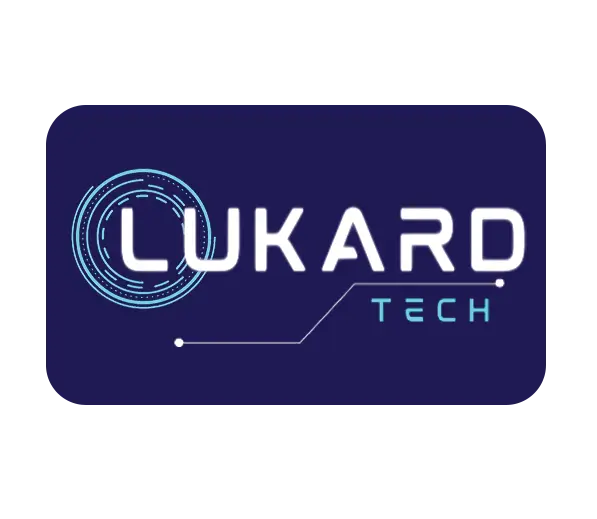A brand is like a story whispered to the world, resonating uniquely in the hearts of those who listen.” Building that brand or story that the world will welcome and accept to use your product is very essential. Companies can have the same product but get very different sales, and this may be attributed to branding. How people see your brand can make you get more customers or make you lose customers. A brand is like the personality of an individual; people always want to associate with a good personality, one that inspires them to be better and the vice versa is very true
In a world filled with constant stimuli and ever-evolving consumer preferences, building a strong brand has become more crucial than ever. A brand is not just a logo or a tagline; it’s the sum total of perceptions, emotions, and experiences that people associate with a company or product. In the vibrant and diverse landscape of Uganda, the art of effective branding holds the key to business success and lasting customer loyalty.
Understanding the Essence of Branding
Branding is much more than just a superficial layer of design. It’s about crafting a narrative that resonates with your target audience and communicates the core values and uniqueness of your business. Successful branding is built on authenticity, consistency, and a deep understanding of the local culture and preferences.

1. Define Your Brand Identity
Brand identity is not just selecting the perfect logo or display for your company. It involves developing a distinct character that magnifies the core aspects embedded in the foundation and core of your brand. It involves molding the way people see, perceive, and interact with your brand. A brand is the face of your business. Identifying your brand helps to develop credibility among your competitors and trust among your customers. The right brand can advertise your business, generate new customers, and delight existing ones. The brand you want to share with the world should be the brand the world wants to interact with. The uniqueness of your brand can be manifested in the color, design, logo, values, mission, and vision of your company.
Ask yourself: What does your brand say? What does your company stand for? What are your values, mission, and vision? How do you communicate your brand to customers? How do customers associate with your brand? In Uganda, a country known for its cultural richness, incorporating local values and traditions into your brand’s identity can forge a stronger connection with consumers.
Examples of companies with strong brand identities include: Apple, Amazon, Tesla, Nike, Airbnb, Coca-Cola, Microsoft, McDonald’s, and Uber.
These companies focus on a unique ideology that makes customers want or yearn to associate with them, and in the long run, these are not only customers; they are advocates. On Twitter, we call them organic customers who don’t just see your product as a “want” but rather as a “need”. In Uganda, we have our very own Jesa Farm Dairy, which is the perfect embodiment of a strong brand identity. They emphasize sustainability, quality, and local empowerment. By sourcing organic milk from local farmers and promoting sustainable farming practices, Jesa Farm Dairy has built a brand that resonates with environmentally conscious Ugandans who appreciate supporting local communities.

Zabik says, “You might have a flashy logo and eye-catching marketing copy, but if it doesn’t address your customers’ pain points clearly and effectively, it’ll be challenging to build a strong and lasting brand identity.”
2. Know Your Audience
Take time to think about your audience and why they would want your product. Would it benefit them? Know these people the same way you would your children: learn them, interact with them, and, as a layman would say, “put yourself in their shoes.” This would help you have a brand and a product that resonate with them and always have room for consistent change and improvement
If a brand possesses a strong comprehension of its audience, it can clearly distinguish its most valuable and least valuable customers, as well as pinpoint potential opportunities. Understanding your target audience is fundamental to effective branding. Conduct thorough market research to learn about the preferences, behaviors, and pain points of your potential customers in Uganda. This insight will enable you to tailor your brand messaging and offerings to address their needs effectively. You need to be open to change if that’s what your customers need. These people, called customers, are your bosses. Are they nagging sometimes? Yes. Can they sometimes be demanding? Definitely, but these are the most important people you need in your business, so you need to know them.
How do you know your audience?
- Review any current data and analytics
- Look at previous successes among your audience
- Create buyer personas
- Conduct surveys
- Keep an eye on your competitors
- Monitor audience feedback, comments, and engagements
- Experiment with content and updates to your products and services
Companies like Netflix, Google, Apple, Disney, and Starbucks have clearly proven that they know their customers and want to continuously learn about them. They have shown that customer service and opinions matter. We have observed them adjust their services and products to be in line with customer preferences.
A good example in Uganda is Riham Foods, which has made a mark in Uganda by understanding the local palate and preferences. Their diverse product range, including snacks and beverages tailored to Ugandan tastes, showcases their commitment to catering to the local audience’s cravings and cultural nuances.

3. Craft a Compelling Brand Story
“A sad story is a selling story”. Brands that have started with a background story have not only sold out but also gotten loyal customers. Don’t be shy to tell your story; why you started your brand because that’s what your customers will connect with. Humans are wired to connect with stories. A well-crafted brand story helps consumers relate to your brand on a personal level. Whether it’s the journey of how your business started, the challenges you’ve overcome, or the positive impact you’re making in the community, these stories can create a strong emotional bond with your audience.
Find out why you created your brand or company, here we are waiting to know your inspiration, know your product and it works. Last but not least know audience, the individuals that would to hear that story and connect with.
Uganics is a brand with a powerful brand story. Focused on combating malaria, a significant health concern in Uganda, Uganics creates mosquito-repellent soap that helps protect families. Their story resonates with consumers who prioritize health and safety for their loved ones.
4. Consistency is Key
Brand consistency entails maintaining uniformity in how you showcase your company and its values across all marketing platforms. This harmonizes the visual identity and message that both existing and potential customer’s encounter.
Consistency across all touch points is crucial in branding. From your logo and colors to your tone of voice and customer service, every interaction should reflect your brand’s identity. This consistency builds trust and recognition, making it easier for consumers to remember and identify your brand anywhere in the world. People don’t do well with chance, so it is paramount to keep your brand the same in whichever place it is; use the same logo, color, structure, and system so that your customers have the same trust, and don’t compare your branches of the company.
Centenary Bank has mastered consistency in branding. From their logo to their branches’ appearance, their messaging remains uniform. This consistency has fostered trust and reliability, making them a respected choice for financial services in Uganda.

5. Engage on Social Media
In Uganda, as in many parts of the world, social media plays a significant role in people’s lives. Utilize platforms like Facebook, Instagram, Twitter, and LinkedIn to connect with your audience. Share engaging content, respond to comments, and showcase your brand’s personality to create a loyal online community. Create websites, apps that can be used by your customers to communicate with you. It is very important to have a channel or way where your customers can give feedback and it will also allow you know where to improve and change according to their preferences
SafeBoda is a prime example of using social media for engagement. They leverage platforms like Instagram and Twitter to connect with users, sharing content that goes beyond their services. By humanizing their brand and engaging in conversations, they’ve created a loyal and interactive online community.
6. Localize Your Approach
While building a global brand is admirable, tailoring your approach to the local context is essential. Uganda’s diverse cultures and languages require brands to adapt their messaging and strategies to resonate with specific regions. Localization shows that you respect and understand the local nuances. Different cultures have different taboos and preferences, so always keep that in mind when creating your band in various places. Let it be in line with the cultures and beliefs of the people in the area. Services might change a little bit, which is okay as long as they are in line.
Café Javas has localized its approach by offering a menu that caters to both international and local tastes. By embracing the diverse culinary preferences in Uganda, they’ve positioned themselves as a go-to dining spot for various occasions.

7. Deliver Quality and Value
No matter how strong your branding efforts are, they will falter if you don’t deliver quality products or services. Consistently delivering value to your customers reinforces your brand’s credibility and encourages positive word-of-mouth marketing.
Mukwano Group stands out for its commitment to quality and affordability. Their range of products, from cooking oil to soap, caters to everyday needs, ensuring that they remain a trusted and accessible choice for Ugandans.

8. Foster Customer Engagement
Engage with your customers beyond transactions. Gather feedback, conduct surveys, and listen to their suggestions. This not only helps in improving your offerings but also makes customers feel valued and invested in your brand’s growth.
Yo! Froyo excels in customer engagement. By encouraging customers to create and share their customized yogurt creations on social media, they’ve transformed their consumers into brand advocates while building an active and engaged community.
9. Give Back to the Community
Ugandans appreciate businesses that contribute positively to their communities. Engage in corporate social responsibility initiatives that align with your brand’s values. Supporting local causes or charities can enhance your brand’s reputation and leave a lasting impact
Sseko Designs is a brand that gives back. By providing educational and employment opportunities to Ugandan women, they’ve not only created a positive impact but also gained the support of socially-conscious consumers who resonate with their mission.
10. Evolve and Adapt
Branding is an ongoing process. Keep an eye on market trends, consumer behaviors, and your competition. Be willing to adapt your branding strategy to stay relevant and appealing to your audience.
MTN Uganda has shown the importance of adapting to market trends. From being a mobile service provider, they’ve expanded to offer mobile money solutions, internet services, and digital platforms, catering to the evolving needs of Uganda’s tech-savvy population.

In conclusion, effective branding in Uganda requires a deep understanding of the local culture, values, and preferences. It’s about creating a genuine connection with your audience through compelling storytelling, consistent messaging, and a commitment to delivering quality and value. By mastering the art of effective branding, businesses in Uganda can build strong, enduring brands that leave a mark on both the market and the hearts of consumers.
By Justine Nassiwa.



